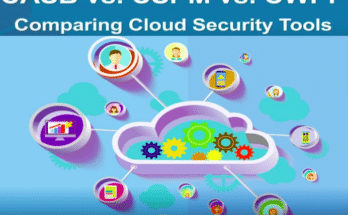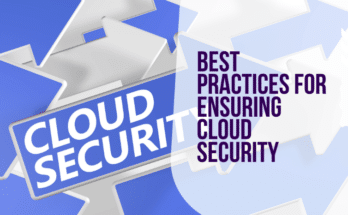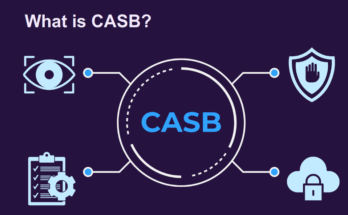As the world is becoming more reliant on cloud services, data security is a primary concern for organizations. Enterprises are storing more and more data in the cloud, but with the possibility of security breaches and leaks. Hence, it’s important to note what the most common threats are.
Since the 2020 pandemic, there has been a surge in enterprises adopting cloud computing services. Today, more and more businesses are moving to a remote work style and embracing cloud practices for improved IT efficiency, flexibility, scalability, and business continuity. But at the same time, they are opening themselves up to future risks.
Let’s look at some top security challenges and risks associated with cloud technology adoption and how to combat them.
Top 11 Cloud Security Threats and Issues
Some organizations fail to determine where the cloud service provider (CSP) responsibilities end and they come into play, leading to several vulnerabilities. Expansion of public cloud utilization has also increased the risk of data leakage and data breaches. To help you understand the cloud challenges, we have listed some of the top security threats and ways to mitigate them.
1. Data Breaches
As per the Identity Theft Resource Center (ITRC) reports, Data Breaches remain the top cloud security threat. Stolen data may include sensitive or confidential information. Hence, the effects brought on by a data breach can cause irreversible damage to your enterprise’s reputation and decrease market value. Your customers might also suffer financial loss if the stolen information carries their confidential data.
Attackers stalk the person/company and look for their weaknesses to exploit. Later, they make initial contact to instigate a breach.
The major cause of the data breaches include:
- Insufficient identity and credential management
- Easy registration systems, phishing, and pretexting
- Insecure APIs
How to Mitigate?
The only way to keep attackers away is to encrypt your data, use patch systems for the network, train employees to watch out for social engineering tactics, and implement tested incident response plans.
- Implement multi-factor authentication.
- Implement data loss prevention (DLP).
- Use cloud access security broker (CASB) to detect and analyze breaches.
- Implement a centralized logging system.
- Implement strong permission policies for Cloud access and usage.
- Use Acronis Cyber Protect Cloud to mitigate data breaches and prevent tomorrow’s attacks with modern technology.
2. Misconfiguration and Inadequate Change Control
Your data is more vulnerable to attacks if the cloud resources or assets are not set up correctly. Granting excessive permissions, using default credentials, disabling encryption and firewall, leaving default admin credentials and port numbers unchanged, maintaining unused and stale accounts, and insecure storage are a few other reasons that can cause security vulnerabilities.
How to Mitigate?
To overcome misconfiguration of cloud resource, organizations must use automation tools that are quick at discovering issues and prevents misuse. It is also recommended to establish baseline configurations and regularly conduct configuration auditing to check for drift away from those baselines.
3. Lack of Cloud Security Architecture and Strategy
Most business owners are inexperienced and jump into the cloud without any strategy and architecture knowledge, which are unique to every organization moving into the cloud.
Businesses must understand the potential threats to data security they are facing with the existing model, how to migrate to the cloud services securely, and other aspects of the shared responsibility model before making a move.
Without proper planning, you are more exposed to cyber-attacks that might result in financial loss, legal and compliance issues. Hence, each organization moving to the cloud must develop and implement a security architecture framework. Also, must conduct constant scans and timely monitor procedures.
How to Mitigate?
- Setting up an automation tool to monitor security continuously.
- Implement IT governance, and service management policies.
- Restricting traffic between trusted and untrusted networks.
4. Insufficient Identity, Credential, Access, and Key Management
If your cloud resources do not support multifactor authentication or carry weak passwords, there are high chances attackers can crack your credentials and make a way to your data. A majority of cloud security threats occur due to identity and access management (IAM) issues.
How to Mitigate?
Hence, it is recommended to implement two-factor authentication and strict IAM controls for cloud users. Also, enterprises must create and maintain key management policies for better security.
5. Account Hijacking
Account hijacking is another security challenge that most businesses face after moving to the cloud. Attackers use phishing practices to gain access to highly privileged accounts. Apart from phishing, they use many other hacking techniques like password cracking, phishing emails, and cross-site scripting to obtain access to domain admin credentials.
On gaining access, they can encrypt all data and hold it for ransom or disrupt your business. Enterprises might require 2-3 days to recover from these account hijacking attacks.
How to Mitigate?
The only way to prevent yourself from account hijacking is to implement a defense-in-depth approach and strong IAM controls.
- Implement strong passwords.
- Control on third-party access.
- Implement multi-factor authentication.
- Implement identity and access control.
- Apply the principle of least privilege.
6. Insider Threats
Insider threat originates from within the targeted organization where an authorized employee or business associate misuses access to privileged accounts. Whether accidentally or deliberately, current or former employees or trusted business partners can help expose intellectual property and confidential data.
According to the Ponemon Institute’s 2020 Cost of Insider Threats study, researchers found that 63% of the incidents were due to employee or contractor negligence.
How to Mitigate?
- The only way to combat this security challenge is to run regular internal audits and fix all misconfigured cloud servers.
- Identify all sensitive and business-critical data you have and monitor for suspicious activity.
- Implement a centralized monitoring tool to track failed login attempts or other attempts to access data or gain elevated permissions.
7. Insecure Interfaces and APIs
User Interfaces and APIs are the most exposed components of a cloud environment that customers use to interact with cloud services. CSPs and customers need to safeguard these components, or else if the attackers make a way through it, they can easily steal all user and employee credentials.
In 2018, social media service experienced a breach where the attackers exploited 30 million accounts due to a vulnerability introduced in a website’s View As feature, reported by Facebook.
How to Mitigate?
Hence, enterprises must protect API keys and exercise standard and open API frameworks for better security. Restrict usage of utility programs and audit tools. Use only those APIs which are designed with security in mind.
8. Weak Control Plane
Control Plane routes air traffic and sets configuration baselines. It is considered weak if the authorized person has limited control over the data infrastructure’s logic, security, and verification. Also, if the controller fails to understand the security configuration or assess blind spots or weaknesses, you might face data leakage or corruption.
How to Mitigate?
- Implement defense-in-depth measures to detect and respond to different kinds of network attacks in a timely manner.
- All users and accounts that need to interact with the cloud control plane should have MFA enabled.
- Implement centralized logging for the entire environment.
- Implement identity policies to restrict access to certain cloud services.
9. Metastructure and Applistructure Failures
The metastructure and applistructure failures occur at the cloud provider level. Cloud metastructure is also known as a waterline that includes the management plane components. It carries information on how to protect systems and shares it via API calls. Poor API implementation can lead to security vulnerabilities. Hence, trust a CSP that offers visibility and conducts penetration tests.
How to Mitigate?
- Implement policies to store and manage identity information.
- Use Acronis Cyber Protect to encrypt and protect data in storage.
- Develop audit plans to address business process disruptions.
10. Limited Cloud Usage Visibility
Cloud visibility has always been a big concern for enterprises, but it has now become one of the top security threats and challenges. We have categorized this security challenge into two – Unsanctioned app use (employees exercise applications without IT permission) and Sanctioned app misuse (IT teams have approved application use but are not in practice as intended).
How to Mitigate?
- To secure data from the limited cloud usage visibility challenge, enterprises must enforce training on acceptable cloud usage policies and conduct risk assessments frequently.
- All cloud services must be reviewed and approved by a cloud security architect.
- Conduct risk assessments at regular intervals.
11. Abuse and Nefarious Use of Cloud Services
Attackers often use legitimate cloud services to host malware or launch DDoS attacks on sites. They try to execute automated click fraud or brute-force attacks to gain access to confidential files.
How to Mitigate?
To prevent and detect such abusive and nefarious activities, cloud service providers must employ cloud data loss prevention (DLP) solutions and keep track of cloud usage. It is also recommended to implement an incident response framework to detect and mitigate such types of attacks.
Conclusion
A cloud environment provides enough scalability and flexibility to the business but, at the same time, increases the risk of exposure to security vulnerabilities.
Companies unaware of cloud security risks often face financial and technical risks. Hence, we have listed some of the top security threats and challenges that come with adopting cloud technologies.
Cloud services have many benefits, but one must also stay updated about the associated challenges. By understanding the significant security threats and ways to mitigate them, you can detect and stop them before they launch or cause any damage.




